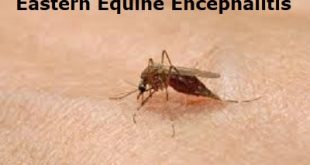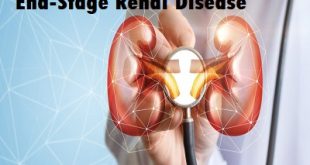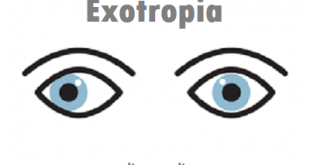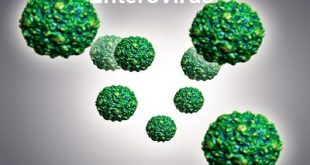What is eosinophilic esophagitis (EoE)?
Eosinophilic esophagitis (EoE) is a chronic disease of the esophagus. Your esophagus is the muscular tube that carries food and liquids from your mouth to the stomach. If you have EoE, white blood cells called eosinophils build up in your esophagus. This causes damage and inflammation, which can cause pain and may lead to trouble swallowing and food getting stuck in your throat.
EoE is rare. But because it is a newly recognized disease, more people are now getting diagnosed with it. Some people who think that they have reflux (GERD) may actually have EoE.
Pathophysiology of eosinophilic esophagitis
Eosinophilic esophagitis is hypothesized to result from a T-helper (Th)2-mediated inflammatory response to food and/or environmental allergens. The Th2 cytokines interleukin-4, interleukin-5, and interleukin-13 have been implicated in disease pathogenesis as has eotaxin-3, a chemokine that attracts eosinophils to sites of inflammation. Chronic esophageal inflammation results in eventual fibrotic changes referred to as esophageal remodeling.
What causes eosinophilic esophagitis?
The esophagus is a muscular tube that propels swallowed food from the mouth into the stomach. Esophagitis refers to inflammation of the esophagus that has several causes.
- The most common cause of esophagitis is acid reflux, which most frequently results in heartburn. Acid reflux can also cause ulcers in the inner lining of the esophagus.
- Other less common causes of esophagitis include viruses (such as herpes simplex), fungi (such as Candida), medications that become stuck in the esophagus (such as the antibiotic, tetracycline), and radiation therapy (such as during treatment of lung cancer).
Doctors believe that eosinophilic esophagitis is a type of esophagitis that is caused by an allergen for two reasons.
- First, eosinophils are prominent in other diseases associated with allergies such as asthma, hay fever, allergic rhinitis, and atopic dermatitis.
- Second, people with eosinophilic esophagitis are more likely to suffer from these other allergic diseases.
Nevertheless, the exact substance that causes the allergic reaction in eosinophilic esophagitis is not known. The hallmark of eosinophilic esophagitis is the presence of large numbers of eosinophils in the tissue just beneath the inner lining of the esophagus.
Eosinophilic esophagitis – Risk factors
The following risk factors are associated with eosinophilic esophagitis:
- People who live in a cold or dry climate are more likely than those in other climates to be diagnosed with eosinophilic esophagitis.
- You’re more likely to be diagnosed between the spring and fall, probably because levels of pollen and other allergens are higher and people are more prone to be outdoors.
- Eosinophilic esophagitis is more common in males than in females.
- Family history. Doctors think eosinophilic esophagitis may run in the family (have a genetic component). If your family members have eosinophilic esophagitis, you have a greater chance of being diagnosed.
- Allergies and asthma. If you have food or environmental allergies, asthma, atopic dermatitis or a chronic respiratory disease, you’re more likely to be diagnosed with eosinophilic esophagitis.
- Originally, eosinophilic esophagitis was thought to be a childhood disease, but now it is known to be common in adults as well. The symptoms differ somewhat between children and adults.
What are the symptoms?
Symptoms of EoE may vary from one individual to the next and may differ depending on age. Infants and toddlers often refuse their food or have trouble growing properly. School-age children may have recurring abdominal pain, trouble swallowing, or vomiting. Adolescents and adults most often have difficult or painful swallowing. Their esophagus may narrow and cause food to become stuck (impaction), causing a medical emergency.
Symptoms also may vary given the developmental ability and communication skills of the age group affected.
Common symptoms include:
- Reflux that does not respond to medication (acid suppressors) – infant, child, adult
- Difficulty swallowing – child, adult
- Food impactions (food gets stuck in the esophagus) – older children, adult
- Nausea and Vomiting – infant, child, adult
- Failure to thrive (poor growth, malnutrition, or weight loss) and poor appetite – infant, child, rarely adult
- Abdominal or chest pain – child, adult
- Feeding refusal/intolerance or poor appetite – infant, child
- Difficulty sleeping due to chest or abdominal pain, reflux, and/or nausea – infant, child, adult
Complications
In some people, eosinophilic esophagitis can lead to the following:
- Scarring and narrowing of the esophagus. This makes it difficult to swallow and more likely that you will have food get stuck.
- Damage to the esophagus. Because of inflammation of the esophagus, endoscopy can cause perforation or tears in the tissue that lines the esophagus. Tearing can also occur in connection with retching that some people experience when they get food stuck in the esophagus.
How is eosinophilic esophagitis (EoE) diagnosed?
To diagnose EoE, your doctor will
- Ask about your symptoms and medical history. Since other conditions can have the same symptoms of EoE, it is important for your doctor to take a thorough history.
- Do an upper gastrointestinal (GI) endoscopy. An endoscope is a long, flexible tube with a light and camera at the end of it. Your doctor will run the endoscope down your esophagus and look at it. Some signs that you might have EoE include white spots, rings, narrowing, and inflammation in the esophagus. However, not everyone with EoE has those signs, and sometimes they can be signs of a different esophagus disorder.
- Do a biopsy. During the endoscopy, the doctor will take small tissue samples from your esophagus. The samples will be checked for a high number of eosinophils. This is the only way to make a diagnosis of EoE.
- Do other tests as needed. You may have blood tests to check for other conditions. If you do have EoE, you may have blood or other types of tests to check for specific allergies.
EoE Treatment options
Time
Symptoms in infants may resolve in the first few years of life, particularly if only one or two foods are involved. When symptoms arise in older children and adults, they usually do not resolve.
Medication
Proton Pump inhibitors are tablets or liquids that reduce acid production but also have an anti-inflammatory action that may reduce or abolish the eosinophilic inflammation in EoE.
Topical asthma steroid puffers or steroid liquid made up as a paste can reduce inflammation in the oesophagus. These are swallowed instead of inhaled, poorly absorbed, and extremely unlikely to cause cortisone/steroid tablet-like side effects. They help reduce inflammation and the scarring that can result from untreated EoE.
It is important to have a rescue plan for the flare of symptoms and to take the lowest dose of medications.
Dilation
If the oesophagus is very narrow, an endoscopy and a procedure are known as dilation may be required to open the narrowed oesophagus to allow the food to pass easier. This may provide temporary relief.
Diet manipulation
Dietary manipulation may assist both adults and children, but should be undertaken under the direction of a gastroenterologist or immunologist, and supervised by a specialist dietitian. When undertaking dietary manipulation, the foods are removed for a period of time and then re-introduced one at a time to see which foods result in symptoms.
Types of dietary manipulation used include:
- Common food allergen elimination diets: These usually include the removal of cow’s milk, soy, egg, and wheat. Allergy testing or patient history may result in the removal of additional foods.
- Step-up diets: Instead of removing many foods at the same time, one to two foods are removed at first, to see if symptoms improve, then repeating a biopsy if they do, but removing more foods later on if inflammation persists on biopsy.
- Directed diets: Foods are removed based on the history of trigger foods and allergy testing. This approach is no longer recommended as allergy test results are negative in most people with EoE.
- Amino acid-based diets: These are based on amino acid/elemental formula and can be impractical in adults and older children, but are useful and commonly used for babies with EoE.
Endoscopies and repeat biopsies are essential to monitoring response to treatment. Symptoms alone are not a reliable guide to disease control. It is important to note that:
Diagnosis of EoE should always be confirmed by endoscopy and biopsies.
Dietary manipulation for EoE should be temporary, initiated by a medical specialist and supervised by a specialist dietitian to avoid the risk of malnutrition.
What is the prognosis?
Eosinophilic esophagitis is a chronic disease that requires ongoing monitoring and management. EoE does not appear to limit life expectancy and there is currently no strong data suggesting EoE causes cancer of the esophagus. In some patients, EoE is complicated by the development of esophageal narrowing (strictures) which may cause food to lodge in the esophagus (impaction). It can also make eating very difficult and uncomfortable for children and adults. It is not clear how long EoE has to exist before strictures form. However, since the natural history of EoE is only emerging, careful monitoring and long-term follow-up are advised.
The initial diagnosis of EoE can be overwhelming and often affects the entire family. A positive attitude and a focus on non-food activities go a long way in learning to live with EoE. With proper treatment, individuals with EoE can successfully manage the condition.
 Diseases Treatments Dictionary This is complete solution to read all diseases treatments Which covers Prevention, Causes, Symptoms, Medical Terms, Drugs, Prescription, Natural Remedies with cures and Treatments. Most of the common diseases were listed in names, split with categories.
Diseases Treatments Dictionary This is complete solution to read all diseases treatments Which covers Prevention, Causes, Symptoms, Medical Terms, Drugs, Prescription, Natural Remedies with cures and Treatments. Most of the common diseases were listed in names, split with categories.








what is the medicine for this disease
The treatment of eosinophilic esophagitis is with proton pump inhibitors and swallowed fluticasone propionate or budesonide. Please consult a doctor to get the prescribed medicines.